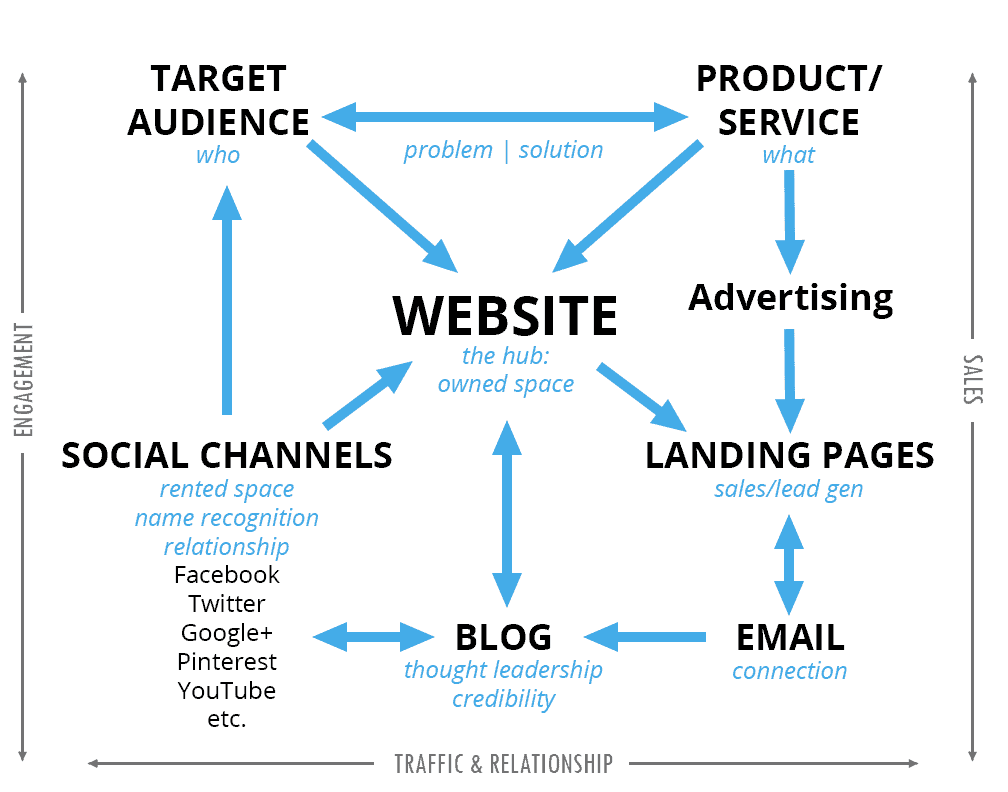My husband said something last night that caught my attention:
“Technology was supposed to make life easier. But instead, it’s made everything more complicated.”
I couldn’t agree more. Particularly if we’re talking about marketing technology.
Marketers have access to more data than ever
We live in an amazing time. Simply by watching the numbers, we can connect the dots between what we offer, what our audience wants, and what’s working and what isn’t.
But if we’re going to leverage all that data, we’ve got to add a ton of tasks to our already-full work load.
Then there’s all the bling that “makes my life easier”: new apps, amazing tools and resources, even more metrics so we can measure results in an area we couldn’t measure before.
Don’t get me wrong. It’s all good. But if you’re like me, you just want the merry-go-round to slow down every now and then.
As marketers, we need to keep the focus where it counts
I’ve been focusing primarily on content marketing and social media for the past several years—with great success. But as my business grows, so does my task list. Things I could afford to let slide are now more important. I see this same trend among my clients.
Marketing plans that used to work just aren’t enough now. And it’s getting more and more difficult to get everything done that needs to get done. If you’re feeling overwhelmed, trust me, you aren’t alone.
So what’s a marketer to do?
When things get busy, it’s vital that you lay down the bling (aka bright shiny objects) and put your focus on the tasks that get results.
To be profitable, you marketing needs just three capabilities: lead generation, sales, and providing a stellar customer experience.
That’s it. When you pare away all the fluff, that’s all that remains.
Recently, I published a high-level overview of a simple marketing plan, which I call The Game Plan.
This is your bare-bones necessity for attracting and converting customers:
Notice that this covers your 3 core competencies.
Lead generation takes place in several of these areas: offers on your website, social channels, your blog and email. You simply need to figure out what your target market wants and begin making offers.
Sales are made through your landing pages (or off-site, depending on your sales process). For that, you need well-designed funnels and irresistible offers. Of course, if you can automate the process, all the better.
Customer experience is taken care of through the engagement and relationship channels.
The key is to get focused
What’s your value proposition? What are you known for?
Again, it’s easy to get distracted by all the possibilities. But you need to avoid spreading yourself too thin. Stay close to your core, the thing your audience wants from you.
Don’t create products your market isn’t asking for. That’s a waste of time—and you’ll probably never recoup it in sales. Spend time talking to your audience, finding out where they itch, and only then creating your proprietary anti-itch cream.
Finally, don’t put too much energy into tasks that don’t give you results.
Noah Kagan published a short case study recently comparing social media to email.
Out of 13,090 followers how many would you expect to click after I tweeted?
1,000?
500?
More like 109 clicks, a 0.8% CTR. WTF Twitter?!?
For him, email gets far more results. So where do you think he’s spending his energy?
You’ve got to test different tactics, channels and methods. Then you’ve got to weed out the things that aren’t working for you. Streamline. If something’s working, do more of it. If not, don’t worry about it.
Strive for balance in the 3 key areas. You need leads, sales, and happy customers. So keep your focus there. That’s the best way I know to slow down this crazy merry-go-round and truly leverage the technology available to us.
What about you? What are you doing to streamline your task list and still get results?



